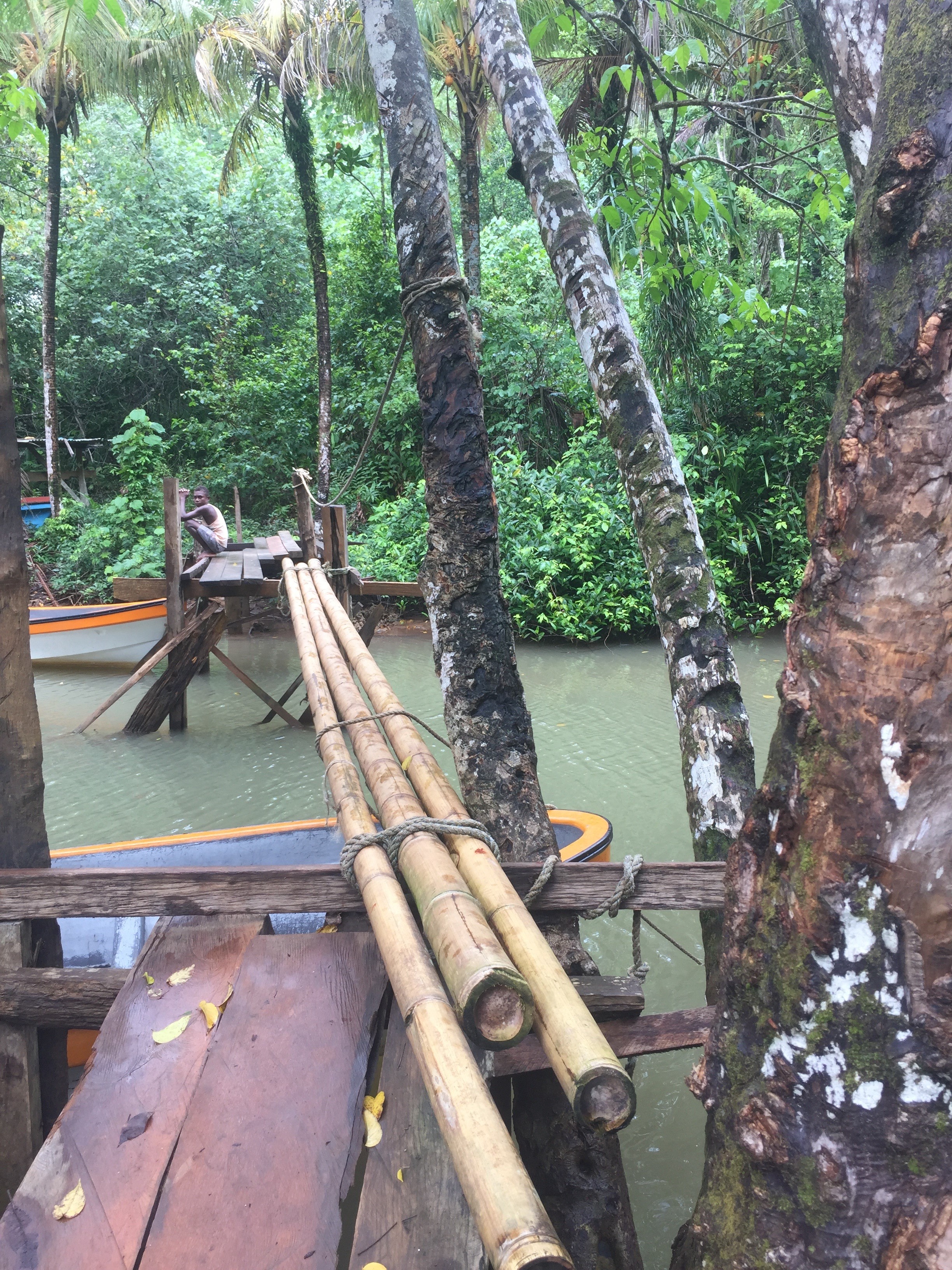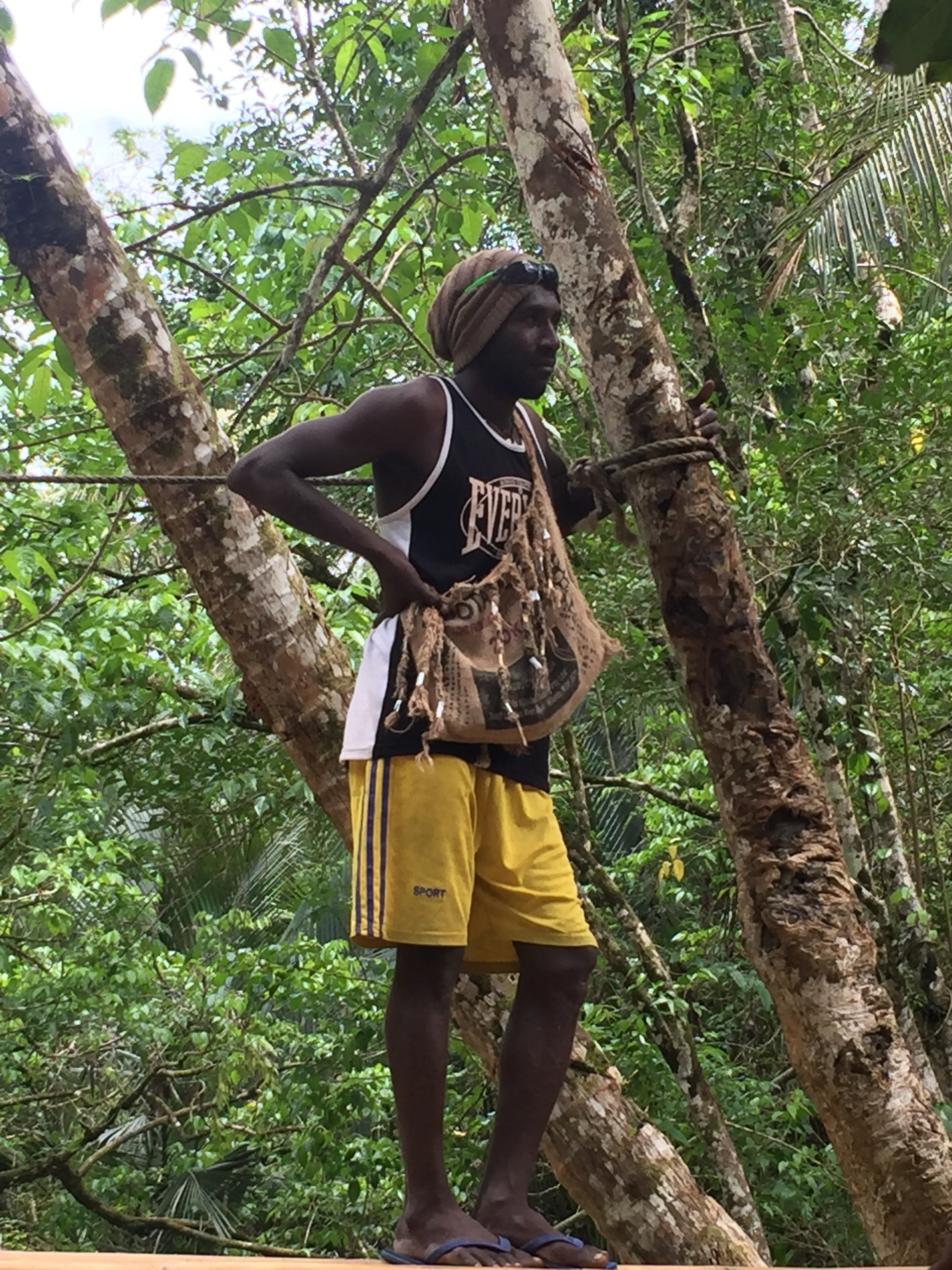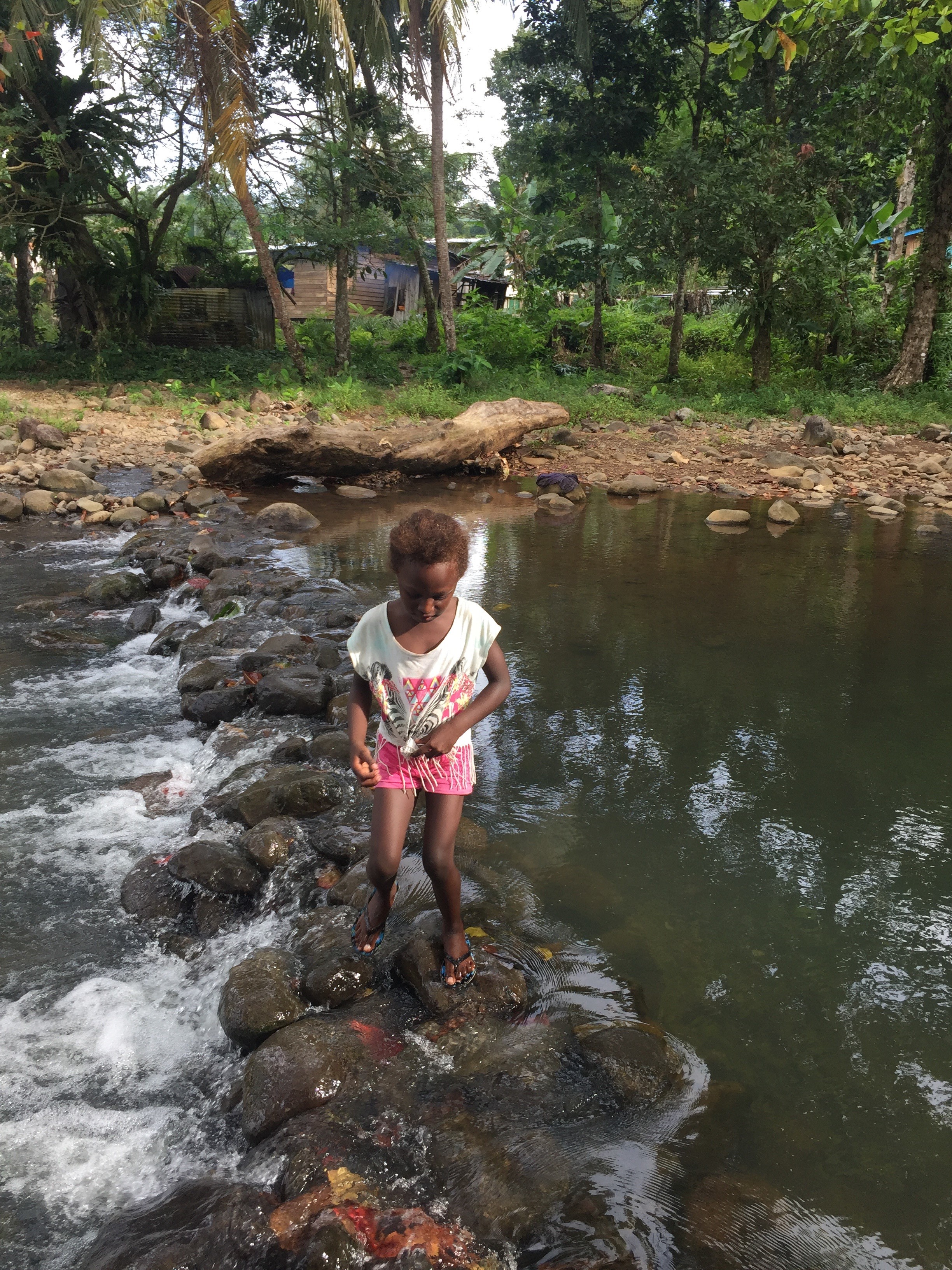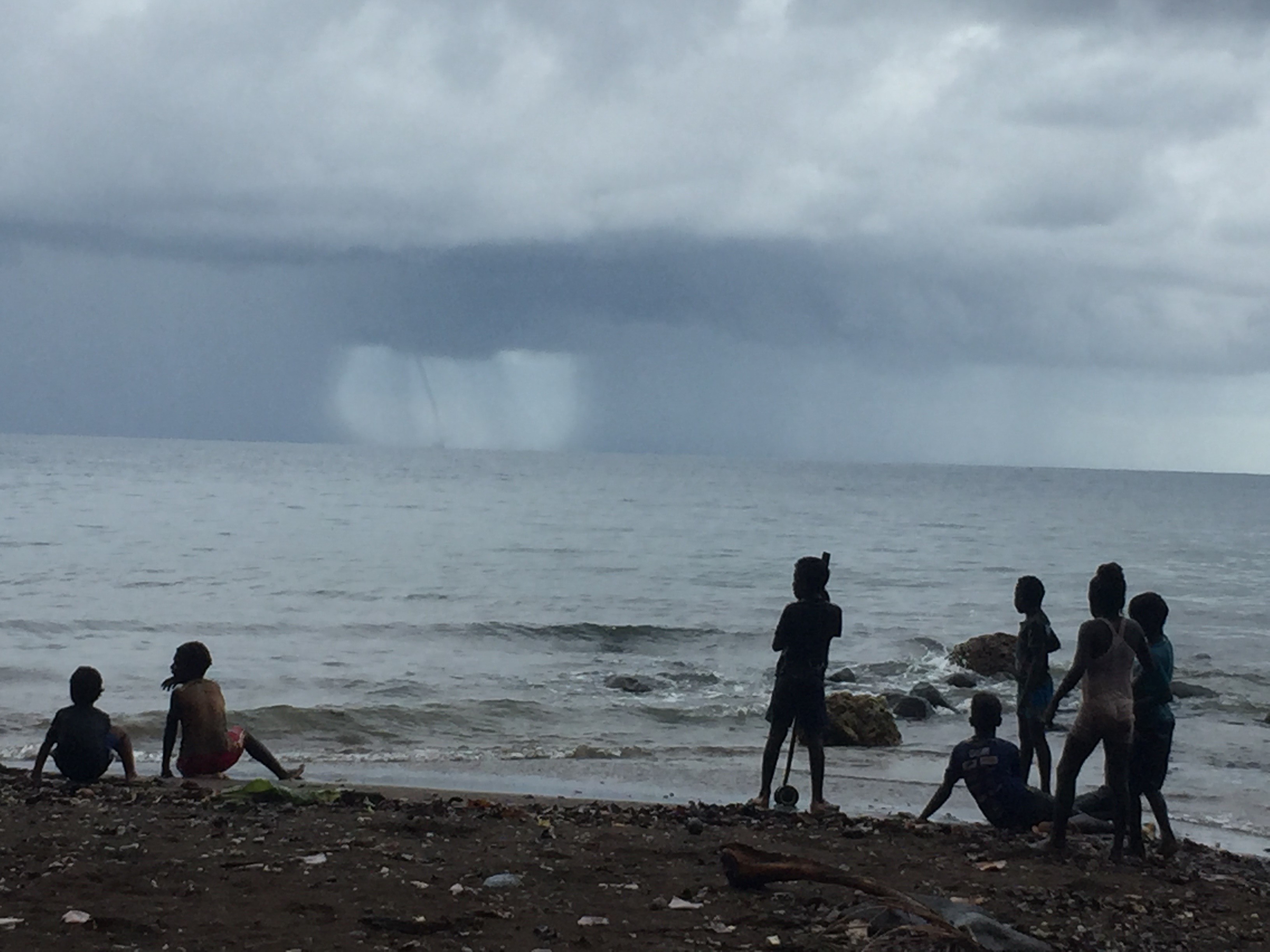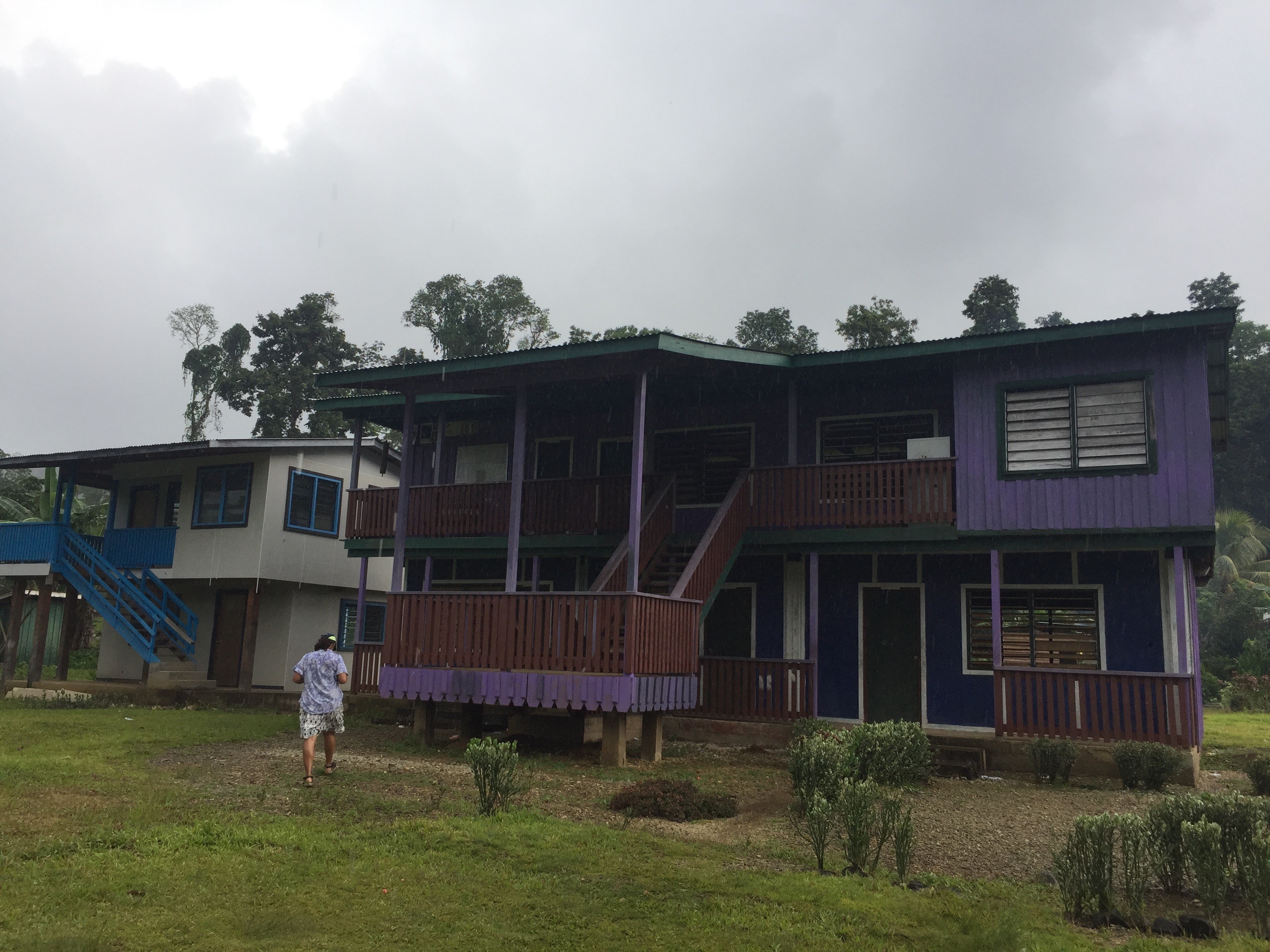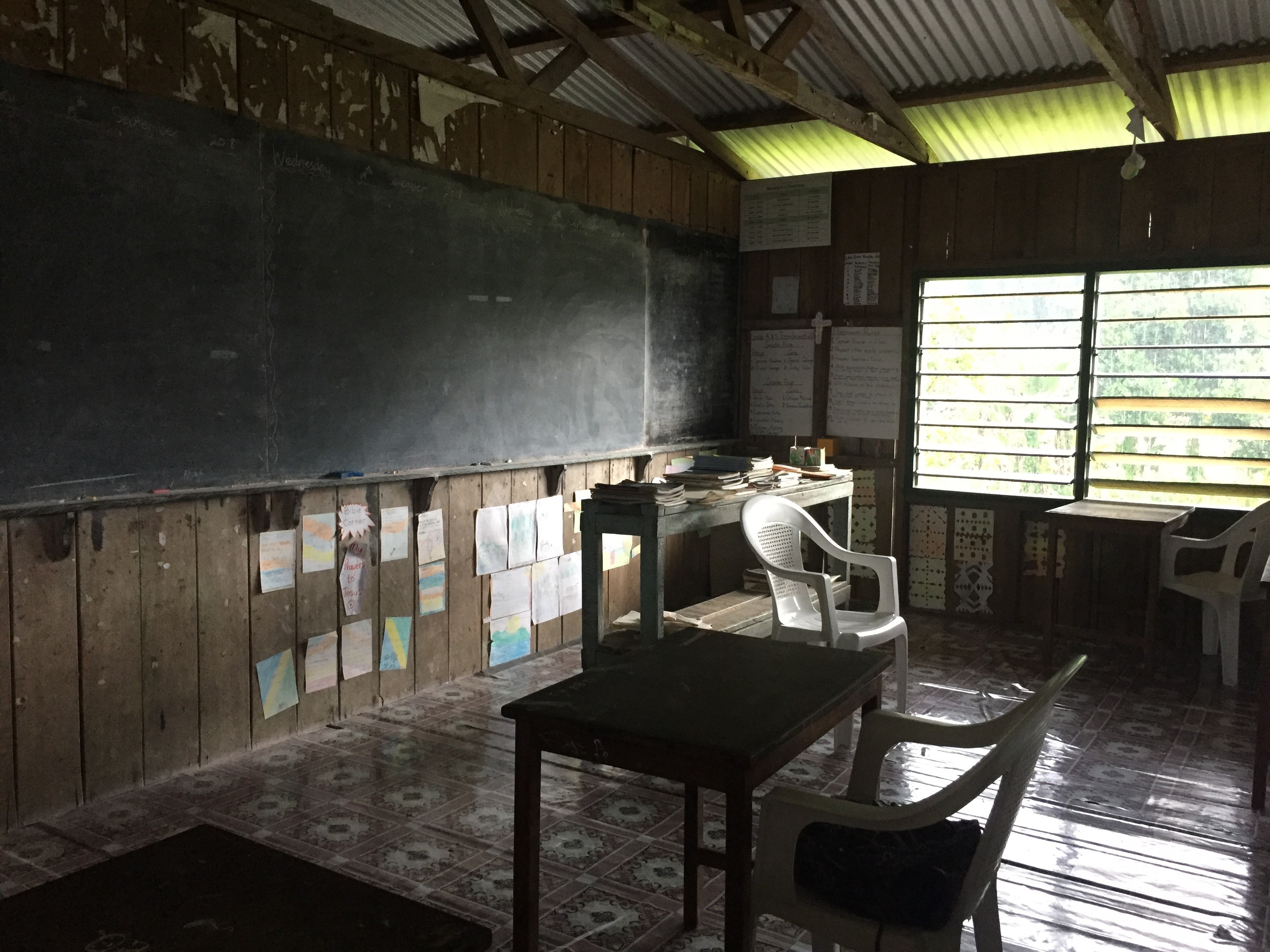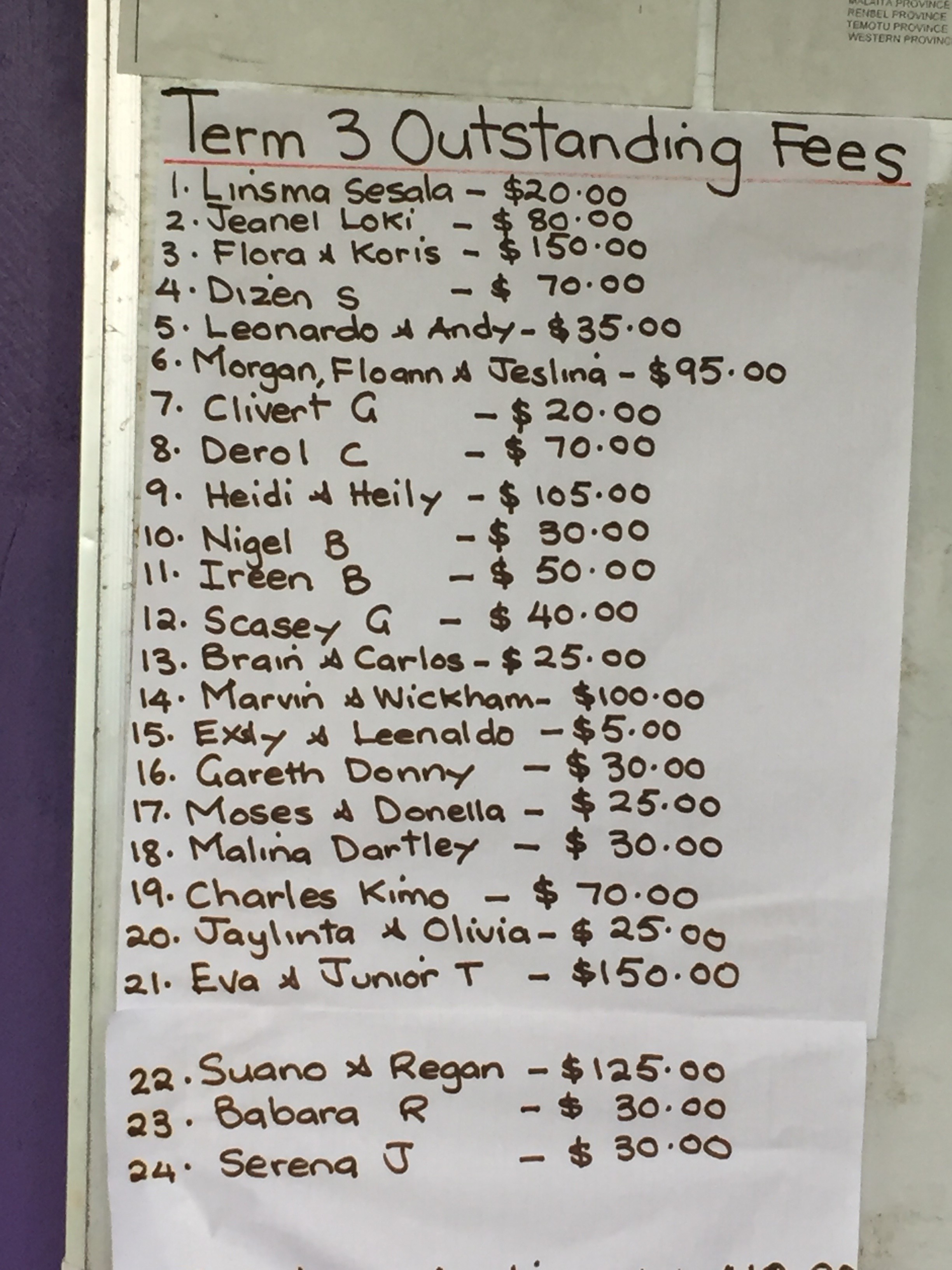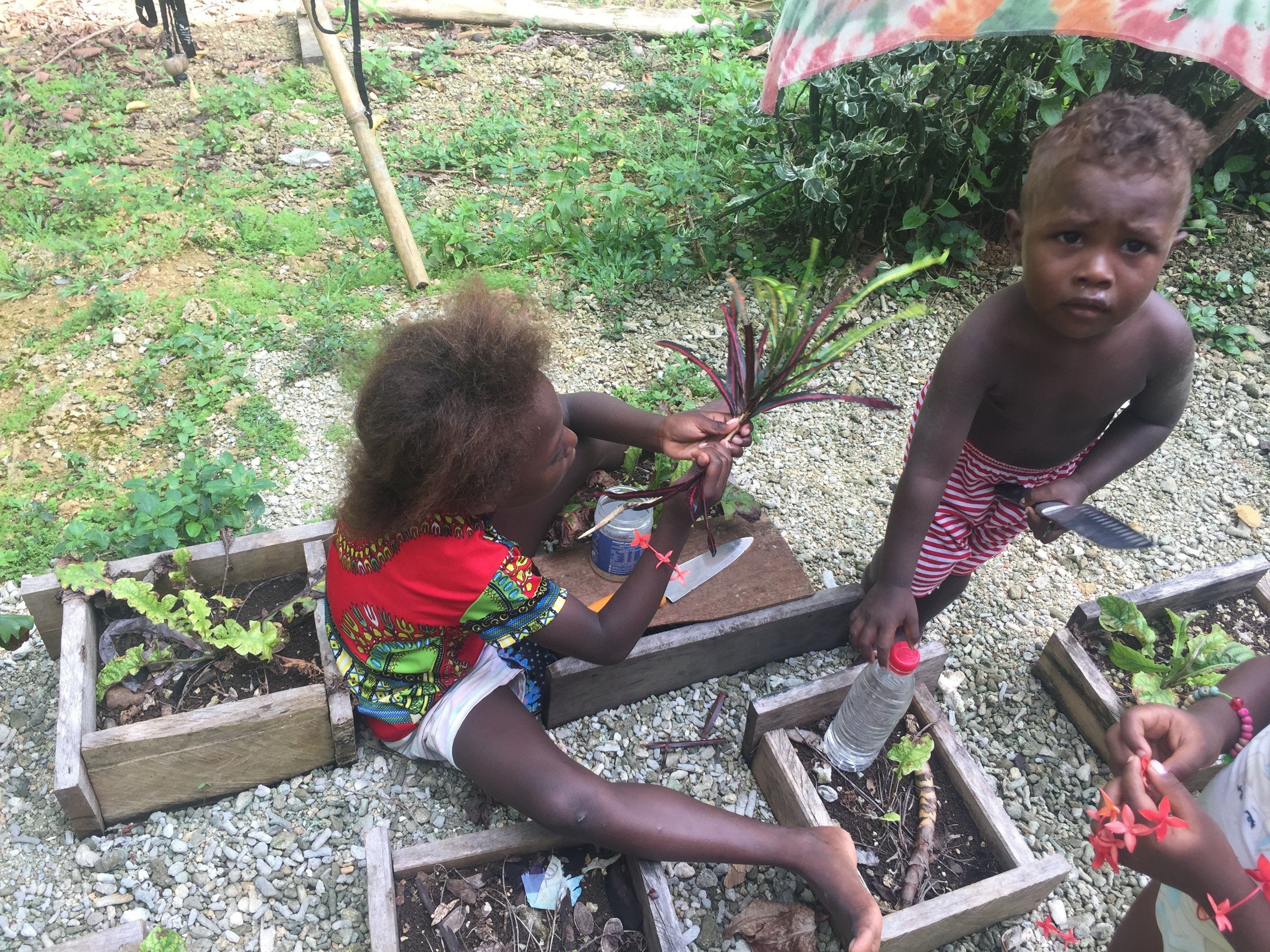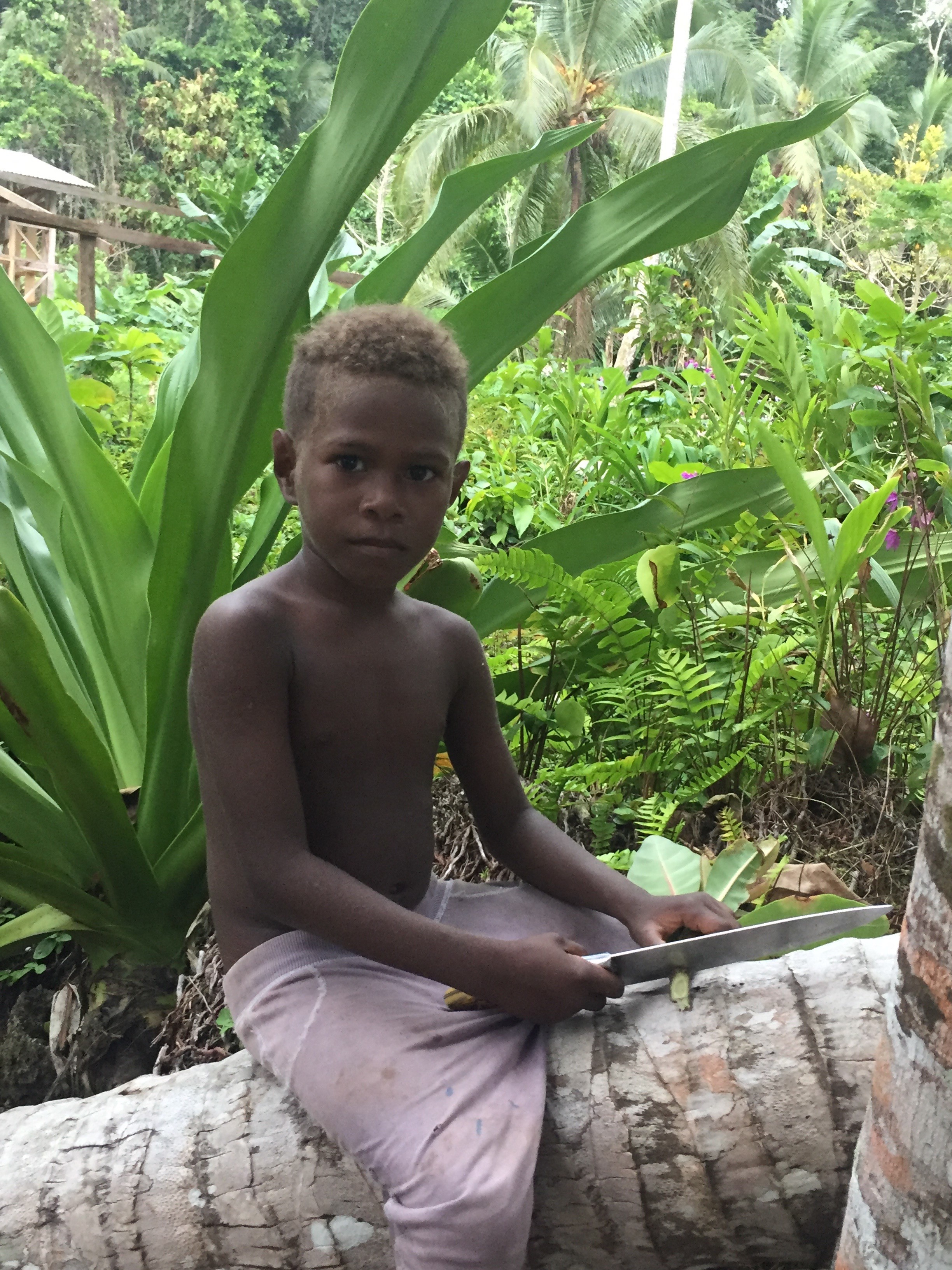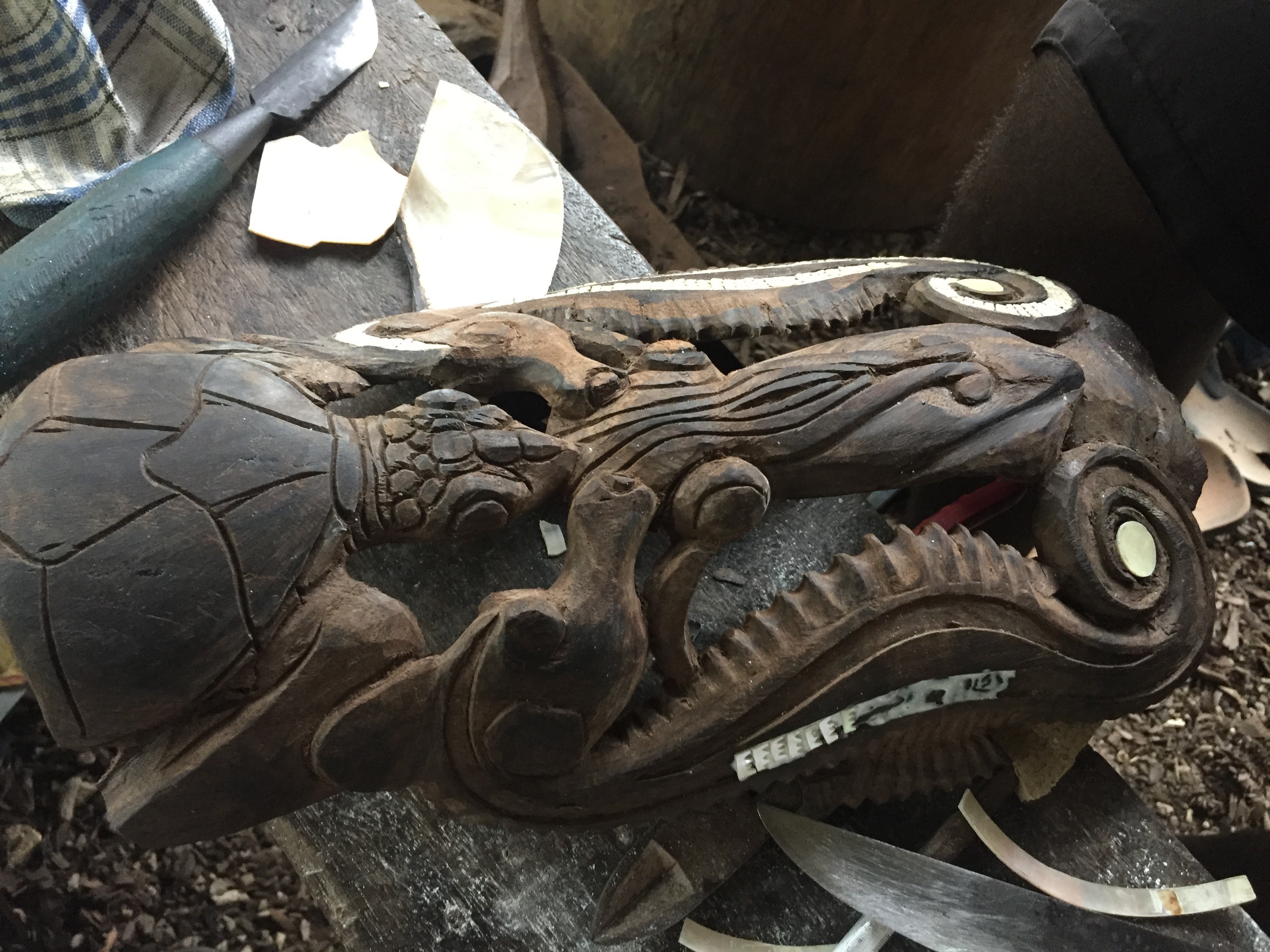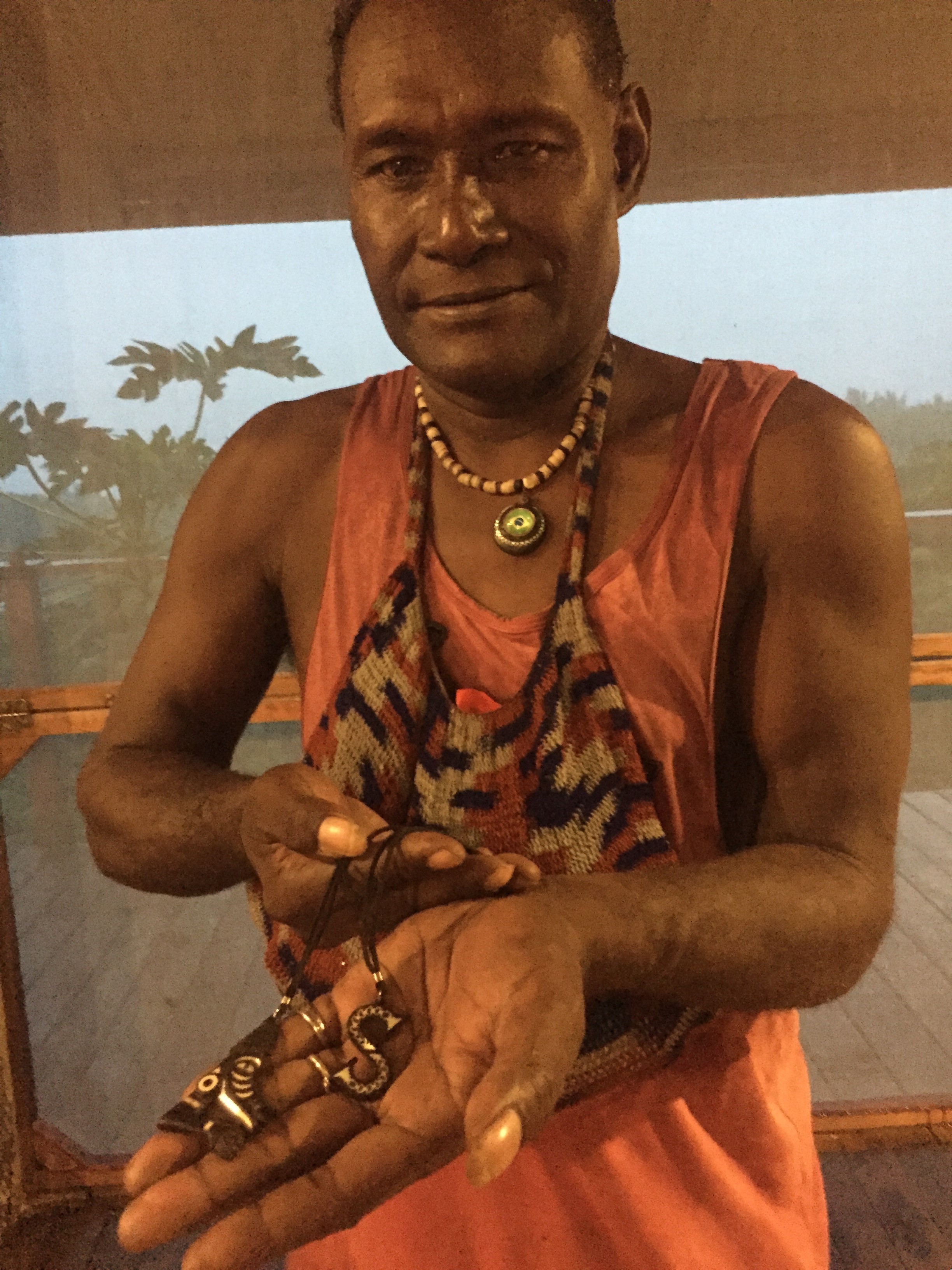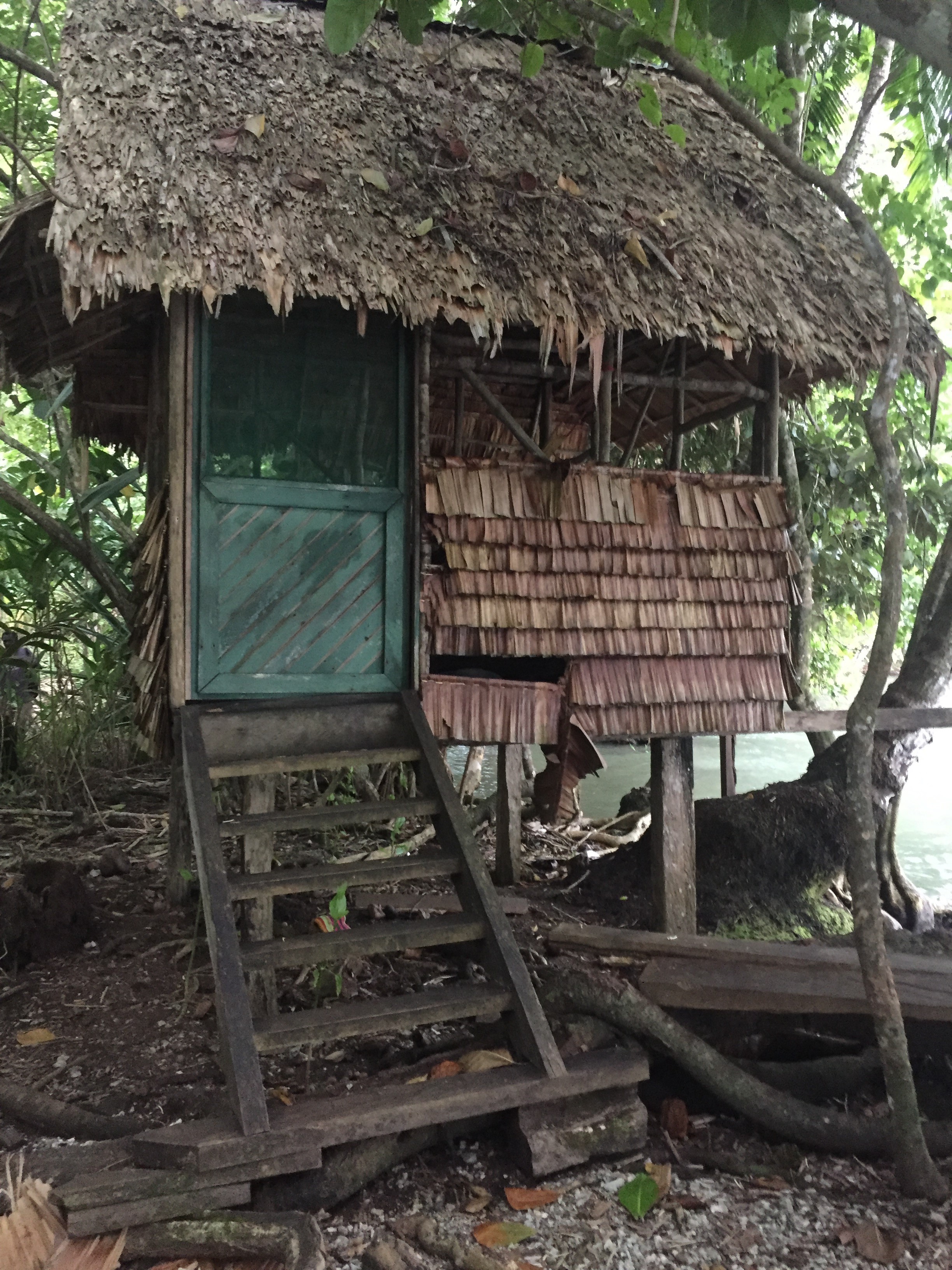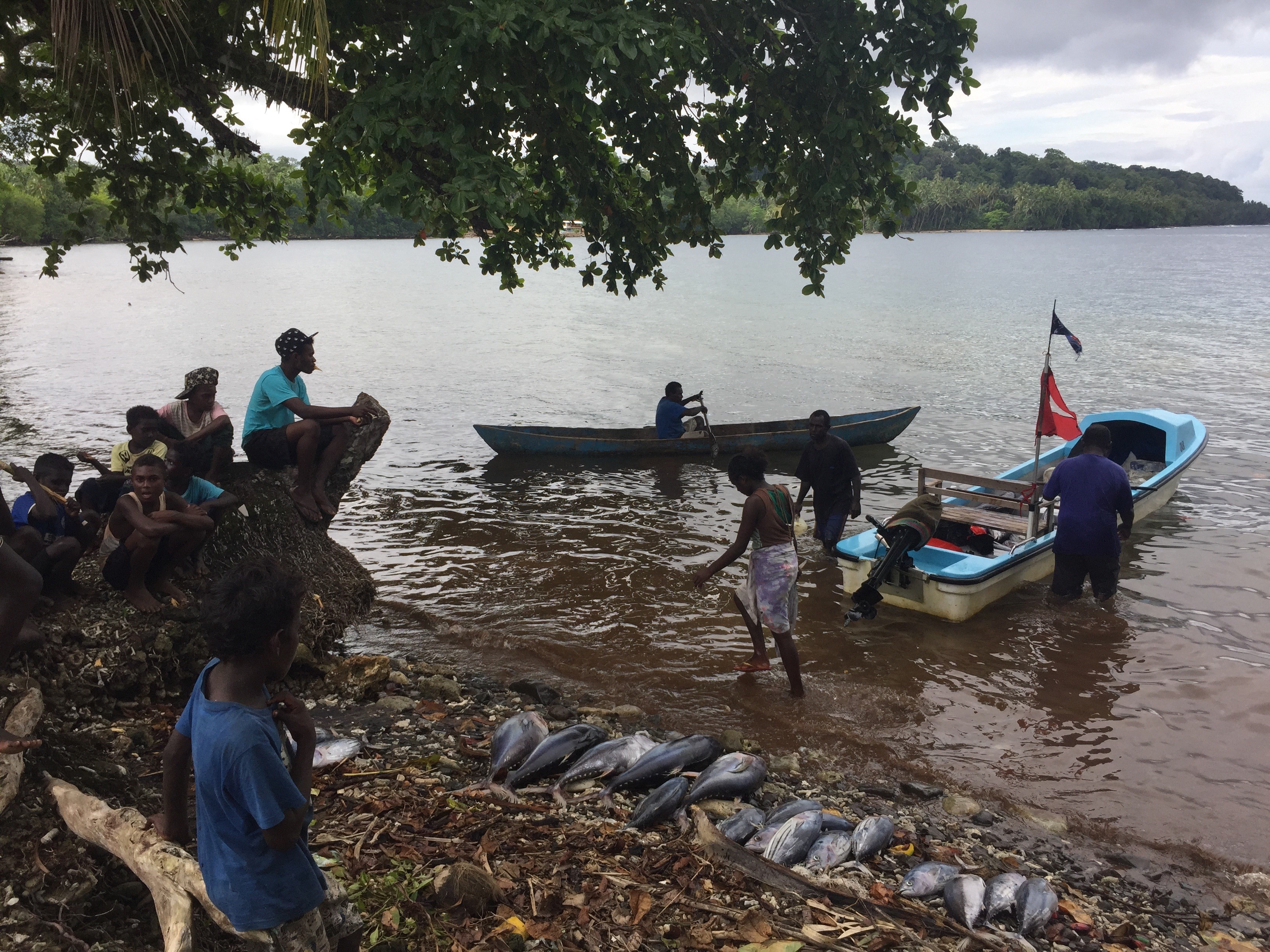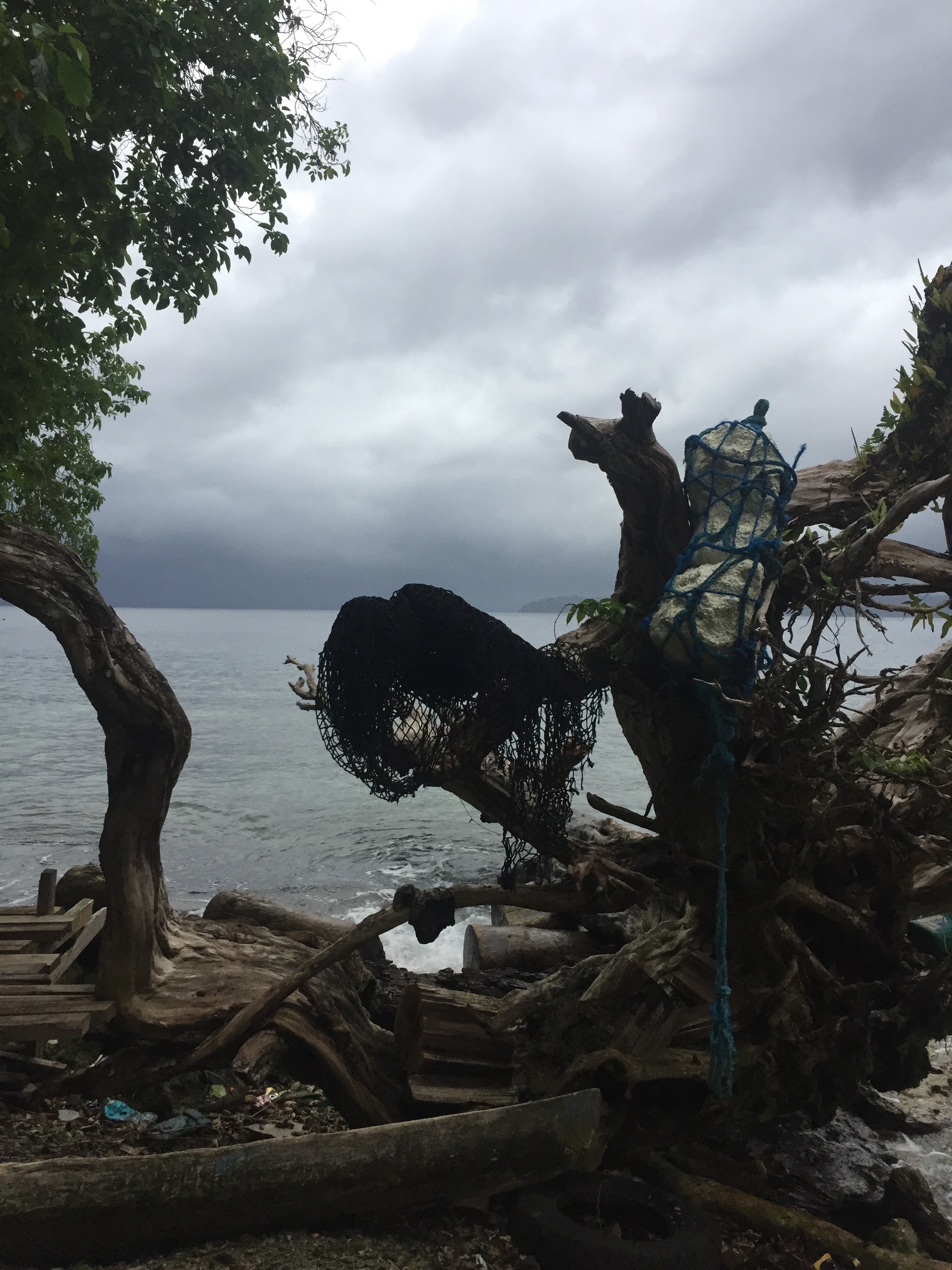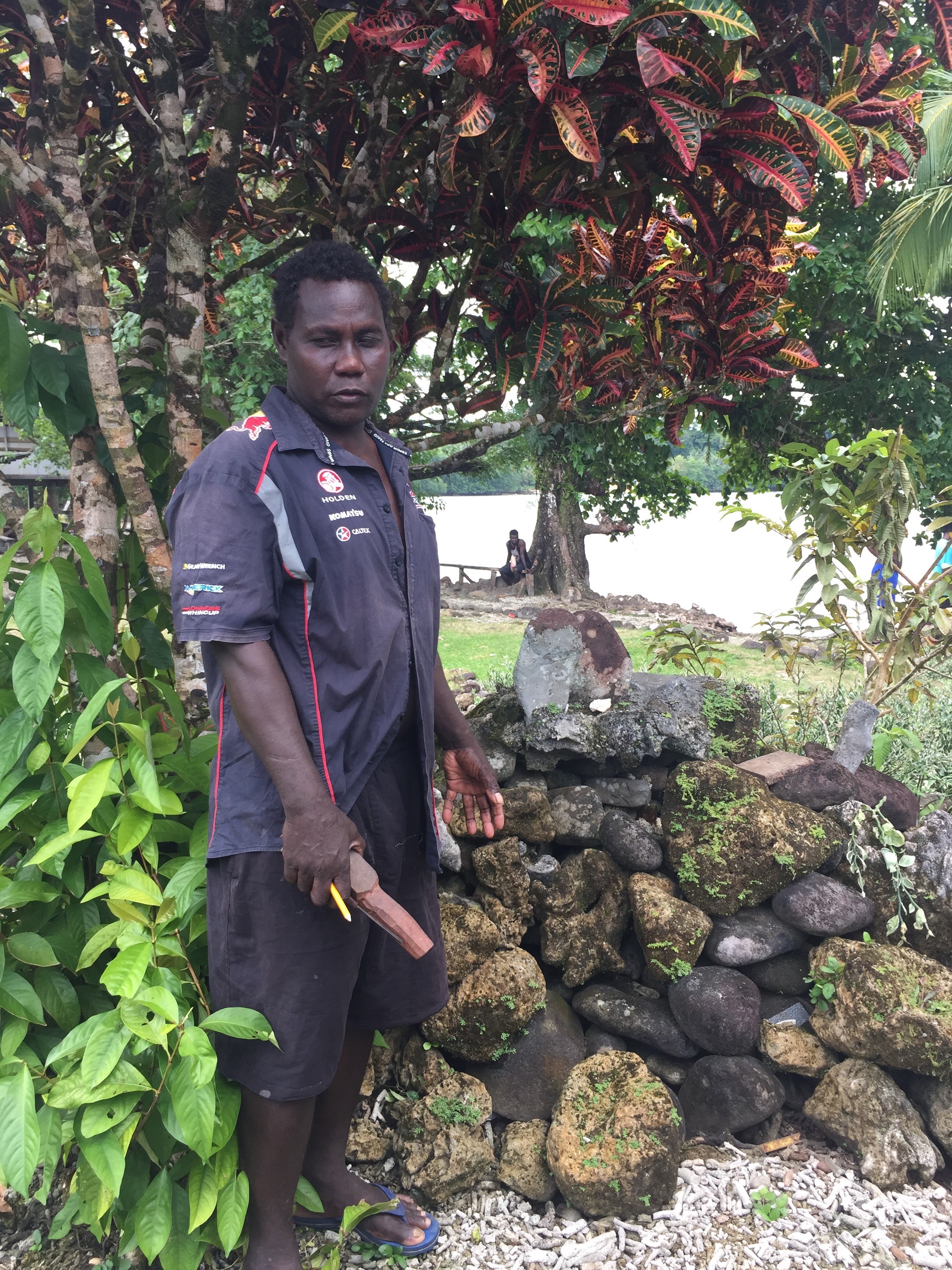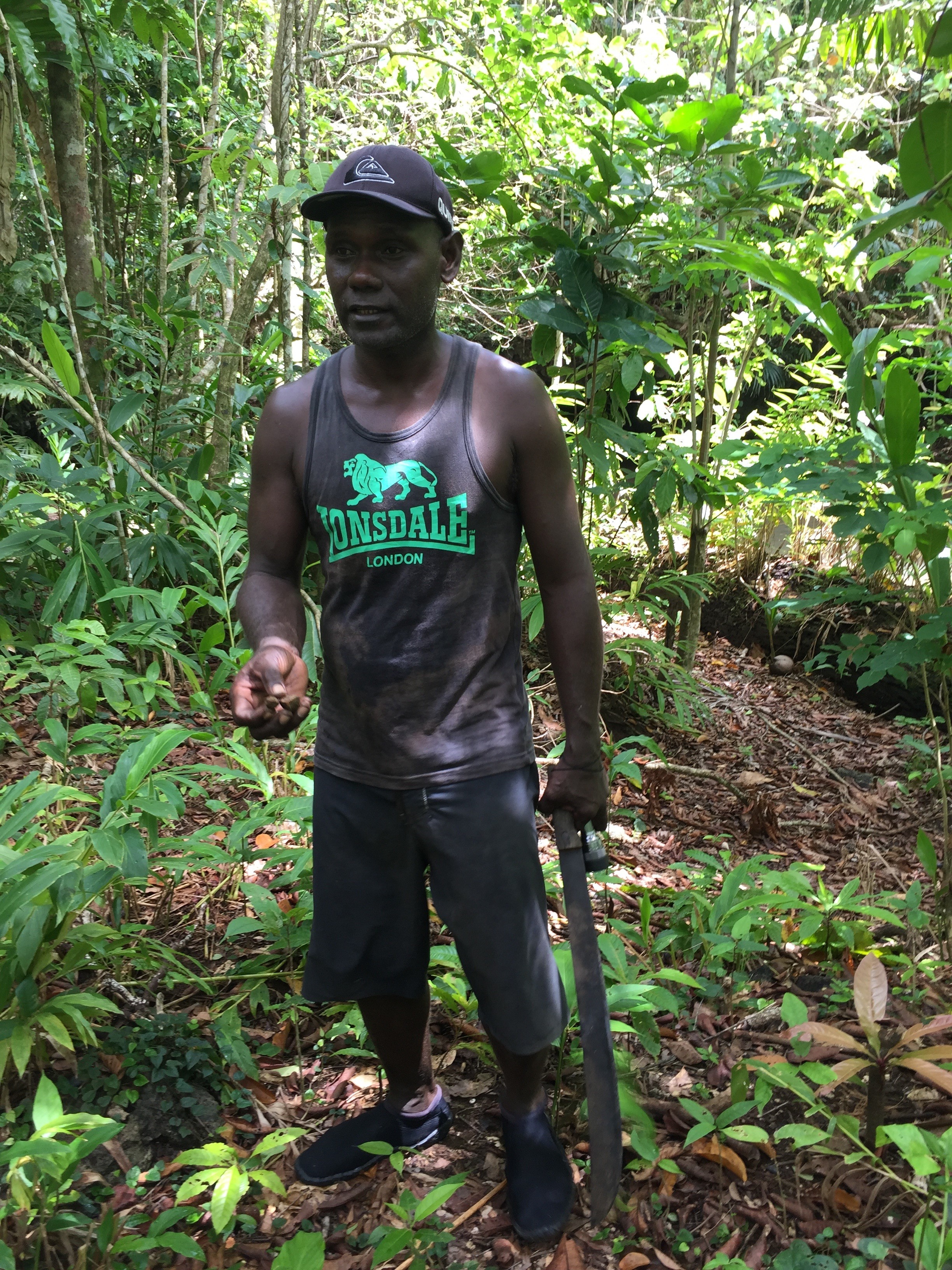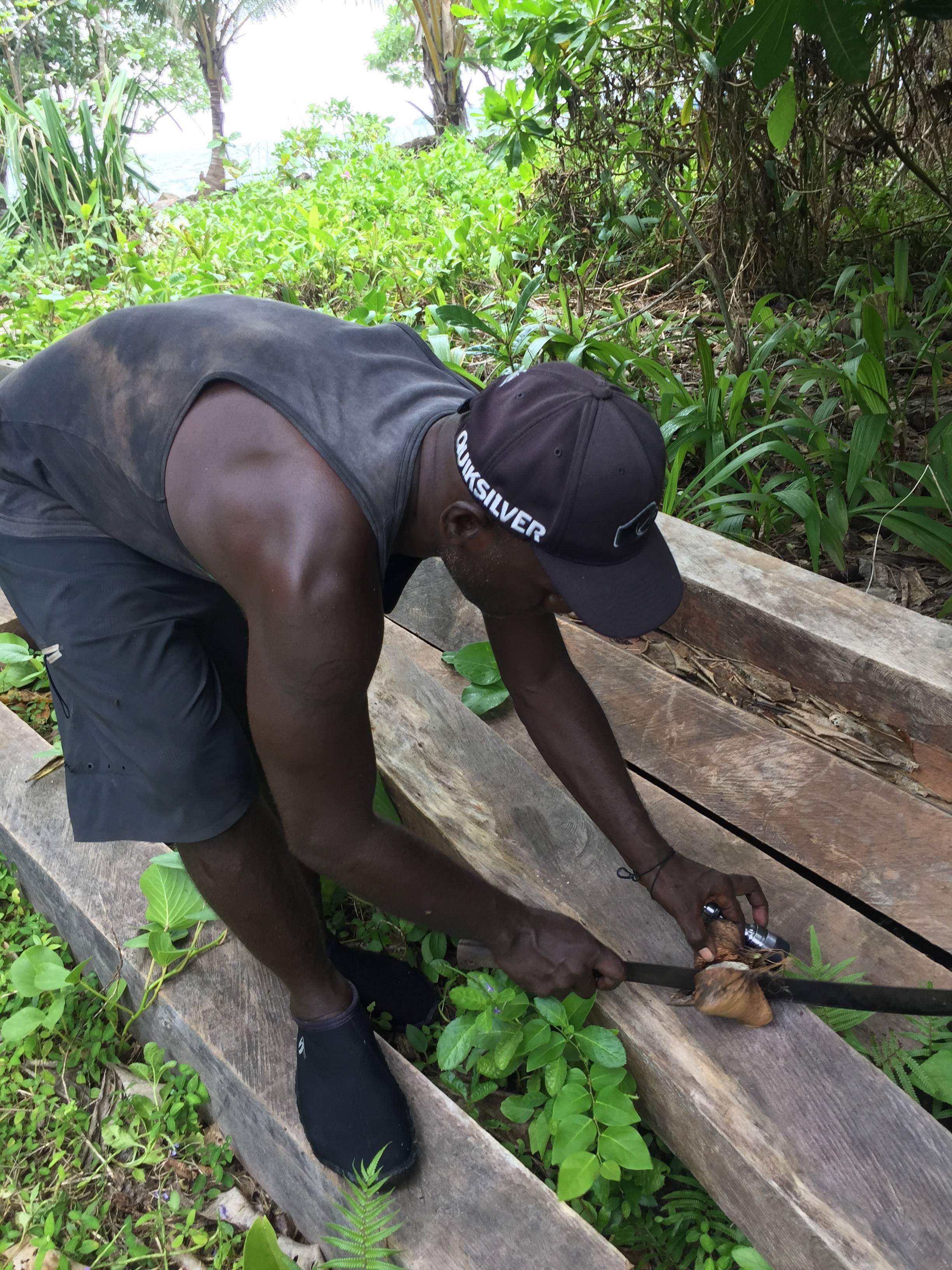Solomon Islands, Village Life
By staying five days in Driftwood Lodge, I was also able to connect with the natives and see a bit their way of life. In order to reach their village, I had to cross two rivers.
This bridge was a bit exposed, especially because the rope to hold on was loose and did not give much support. However, I did not fall into the water.
The bridge was no problem for the natives
Second river crossing
On my first time walking to the village, I saw a cyclone approaching in the distance and returned back to the lodge. The storm was so strong, that I was afraid that a coconut got loose and falls on my head – it did not happen.
A cyclone on the horizon
It did not reach the island.
On my second walk, we visited the new village school (built by an NGO). Children go to school from age 7 until 13. If they want to continue their education, they have to go to a boarding school.
New village school
The only classroom
It was interesting to see the public display of the fees not paid
In general, the education of the children is built on trust. Letting them do things from a very young age is one of the teaching tools. Even very young children can handle knives.
Little grandson of Gura with a huge knife
The village is home of master carvers. All are members of a huge family. We visited one of the carvers in his home. He was in the process of creating a sculpture depicting an octopus and turtle made out of ebony.
Every carving is done solely by hand and with very simple tools.
Smiley is another member of the family of carvers. Here he shows the two pendants he made out of ebony and shells.
In every house, the kitchen is a separate building. I assume that the reason for that is fire prevention. However, this means that another danger is luring during flooding. Crocodiles might swim underneath the houses, which is especially dangerous for children.
Kitchen house
Fish is the main meal of the natives. One time I saw a boat coming to the shore with lots of fish. Children were watching and helping carrying the fish home.
A dead tree used to hold fishing nets
Gura, one of the master carvers, showed us two heaps of stones marking a sacred place. One heap contained the earth of the home island from where his ancestors came from. They were asked to come and protect the village from the enemy. The other heap marked the grave of a warrior, once covered with smoking pipes (they were sold to missionaries, like many other cultural things). His ancestor was the head of an army of warriors. The name “warrior” could only be used by somebody who killed at least 30 enemy warriors and brought back their heads. This area was the home of headhunters. The last headhunter hunted in 1942.
Gura with his carving knife and an unfinished object
There is no doctor on most of the islands. The natives rely on the knowledge of healing plants growing in the jungle. This is very different to Honiara, where people have forgotten the natural healing remedies. In Honiara, they rely on doctors, which do not have much knowledge of Western medicine either. Often antibiotics are prescribed, even when there is no relationship to the sickness.
Stewy is not only a master free diver but also knows a lot of jungle plants. He went with us on a jungle walk and explained the different healing plants. When bleeding, moss is used to stop it. Specific leaves of a plant are used to stop stomachache. Crushing Papaya leaves and eating the bitter substance treat dengue fever.
The four corner fruit is used for insect bites.

